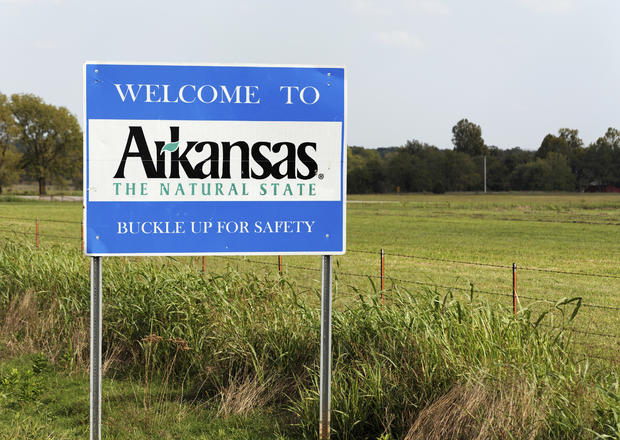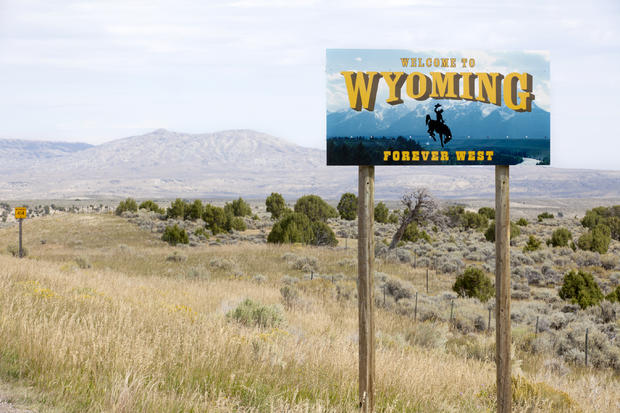9 states where women face the largest gender pay gap
While women across the U.S. earn less than men, in some states the gender imbalance is more extreme than others.
Gender inequality in paychecks usually results from several trends, such as occupational segregation (or where women tend to hold certain low-paying jobs, such as waiting tables), according to a new study from the Institute for Women's Policy Research. The glass ceiling also persists, which is evident in that fewer than 5 percent of CEOs in S&P 500 companies are women.
As more women have earned college degrees and entered the workforce, that's helped narrow the pay gap, although progress has stalled in recent years: Women still earn far less than men, at 78 cents for every $1 earned by their male counterparts, the study noted. The gender imbalance isn't only a problem for women. The report pointed out that women's paychecks are increasingly important to American families' economic security.
While men continue to earn more than women, they're also suffering from some negative earnings trends, the study noted. Men's real earnings have remained flat during the past 30 years, while women's income has grown, although from a much lower base.
Looking at the gender imbalance in pay by state, the gap was the narrowest in New York, where women earn almost 88 cents for every $1 men earn. Regional differences also showed up in the findings. Women in the Northeast and Mid-Atlantic regions had a smaller wage gap than in other regions.
The worst region for gender equality in pay was the South.
Read on to find out which nine states suffer from the largest gender imbalance in pay.
9. Montana
Women in Montana earn 75.2 cents for every $1 men earn, the study found.
Annual median earnings for women were also low, at $31,600, or 19 percent below the national median annual income for women. One reason for the state's low wages for women is the prevalence of service occupations, such as low-paying jobs like waitressing. About one-quarter of the state's full-time employed women work in service occupations, giving Montana one of the highest percentages in the country.
A study from Montana's Equal Pay Equal Work Task Force noted that women in the state earn less than men in every occupational category. It added that lower wages for women reduces their incentive to work.
8. Mississippi
In this Southern state, women earn 75 cents for every dollar men earn.
In Mississippi, women's take-home median annual earnings of $30,000 rank the state alongside Arkansas, Idaho and South Dakota as offering the lowest median income for women in the country. It's about 23 percent below the national median.
College-educated women are also taking a hit in Mississippi, the study found. Women with college degrees have median annual income of just $43,000, or the third-lowest in the country. Only college-educated women in South Dakota and Oklahoma earned less, at $38,000 and $42,000, respectively. Mississippi's college-educated men, by comparison, have a median annual income of $60,000.
7. Idaho
Women in Idaho are making small potatoes, at least when it comes to how their paychecks compare with the state's working men.
Idaho women earn 75 cents for every $1 men earn. Annual median earnings for women working full-time are just $30,000, or 23 percent below the national median earnings for women. That puts it on par with Arkansas, Mississippi and South Dakota, with those four states providing the lowest median annual pay for women.
As with other low-pay states for women, professions in service industries and in the wholesale and retail trade are more likely to employ women than others, such as in finance or manufacturing, where wages may be higher.
6. Arkansas
The Land of Opportunity isn't doing very well by its women residents who work full-time, with the state ranking among those offering the lowest pay.
Women earn 75 cents for every $1 men earn, the study found. The annual median earnings for women stand at $30,000 per year, or 23 percent below the national median earnings for women. That gives Arkansas the dubious distinction of tying Idaho, Mississippi and South Dakota as providing the lowest median annual earnings for women in the country.
Women in Arkansas are more likely to work in the wholesale and retail trades, such as shop clerks, and in the services industries, such as in health care and restaurants, the study found.
5. Nebraska
While the state promises "The Good Life," Nebraska women definitely don't have it as good as men when it comes to their paycheck.
Women in this Midwestern state earn just 73 cents for every $1 men earn, while median annual earnings for women who work full-time stand at $32,900. That's 16 percent below the national median annual earnings for women who work full-time.
Interestingly, Nebraska and other Midwestern states such as Minnesota and North Dakota have the highest rate of women's labor force participation.
One reason for the lower pay may be due to the mix of jobs where women are employed, given that only 3.5 percent of women hold STEM (science, technology, engineering and math) jobs. On the other hand, 22 percent of Nebraska's women who work full-time hold office and administrative support roles, which may pay less than jobs in manufacturing and the government, where fewer women work.
4. Utah
This Western state ranks as the fourth most unequal state for women's pay, where women earn just 70 cents for every $1 men earn.
The median annual income of women in the "Industry" state stands at $35,000, or almost 11 percent lower than the national median annual pay for women.
Still, those earnings are for women who are employed full-time, an area where Utah especially lags. The state has the nation's largest difference between men's and women's labor force participation rate, with only 58.7 percent of Utah's women working full time, compared with more than three-quarters of its men.
Many women in Utah may be picking a more flexible work situation. The report noted that the state has the highest percentage in the nation of employed women who work part-time, at 40.2 percent.
3. Wyoming
While the state's motto is "Equal Rights," that doesn't appear to have translated to equal pay between the sexes. Women in Wyoming earn 67.9 cents for every dollar men earn.
Women in the state earn $36,000 in median annual earnings, or 8 percent below the nation's median earnings for women.
The mix of occupations in Wyoming might be one reason why women's earnings are far below that of the state's men. One-quarter of its employed women work in service occupations, which tend to pay less than managerial or professional roles.
2. West Virginia
While this mountainous state might be almost heaven for some workers, it's falling short when it comes to equal pay for women. Women in West Virginia earn just 67.3 cents for every dollar men earn, according to the report.
The annual median earnings for West Virginian women stand at $30,300, or 23 percent below women's national median earnings.
Of course, those earnings are for women who are actually part of the labor force. Only 49.3 percent of the state's women are holding down full-time jobs. That gives West Virginia the country's lowest labor force participation rate for women.
1. Louisiana
The state of Union, Justice and Confidence ranked as the most unequal U.S. state for women, who earn just 66.7 cents for every $1 Louisiana men earn, the report found.
Women working in Louisiana earned a median income of $32,000, compared with women's national median earnings of $39,157. As a result, Louisiana ranks as among the country's worst 10 states for women's median annual earnings.
One reason why the state suffers such a large gender pay gap is the prevalence of women working in service-based jobs: One-quarter of employed women are in professions such as waitressing or shop clerking.
The state flunked on providing high-paying tech-based jobs to women, with only 3.2 percent of Louisiana women employed in STEM occupations. That places Louisiana as one of the three worst states for STEM-based jobs for women, with only South Dakota and Mississippi offering even fewer opportunities.
By comparison, on a national level, 29 percent of women are employed in STEM occupations.









